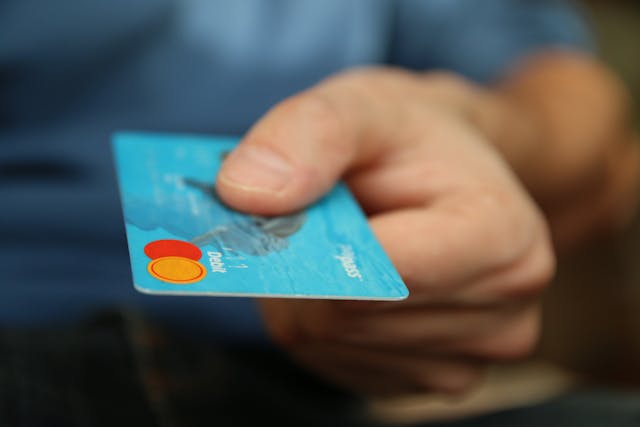What Is the Buyer’s Journey For An Online Purchase and What Content Works Best at Each Stage?

Read to find out what the best digital marketing agencies in Dallas say about the contents your buyer needs at every stage of their buying journey.
Introduction
As a seller, you might have met a customer who made a buying decision instantly. The selling process was easy and smooth for you. However, the truth may be that the customer was thinking and researching about their purchase for quite some time, and they were at the last stage of the buying journey when you interacted with them.
A study reveals that buyers generally contact the seller or suppliers only after they have completed 57% of their buyer’s journey to make a purchase decision.
What is the Buyer’s Journey?
When a customer evaluates a product or service to buy, they are undergoing a buyer’s journey. And like every journey, there is a beginning, the middle, and the destination; so also a buyer travels through three stages in the journey to make a buying decision. These stages are the awareness stage, consideration stage, and decision stage.
Each of these stages is further explained in detail to help you understand the buyer’s perspective during these stages – what is going on in the buyer’s mind regarding the product or service. According to the Dallas digital marketing company, if a seller can understand the customer’s mind properly, they can assist the buyer with the relevant information and tools to make an appropriate purchase decision.
1) Awareness Stage
This is the beginning of the journey, where a buyer is facing a particular problem and wants to know more details about it. The buyer researches the internet to try and find the possible causes of the problem and how to solve it. Though the ultimate goal of the buyer is to get the problem solved, at the awareness stage they are merely seeking information about the problem and more importantly the ways and means to solve them. The buyer’s research is wider in range during this phase but not in depth.
2) Consideration Stage
In this stage, a buyer is well aware of the problem or pain points and their possible causes; however, now they are more interested in the ways and means to solve the problem. During this stage, a buyer is looking for various alternatives and options available to them to solve the problem. They are also considering each alternative and the benefits associated with each option carefully.
This is the stage where a buyer spends maximum time. Their research becomes more in-depth and consumes more analytical information that helps in comparing products and services.
3) Decision Stage
When a buyer has already decided what they need, and now is mulling over things like prices, discounts, brand value; after sale services, customer care, reviews of the existing users and consumers of the product, etc.
In short, the buyer has already made up their mind about the kind of solution they would like to have. They are now narrowing down the various options and eliminating them to come down to one final decision and the eventual purchase.
During this stage, buyers may be busy creating a list of available vendors; shortening those lists, and eventually coming down to one particular vendor.
Importance of Staying With the Buyer
Earlier, during the traditional way of doing a business, a buyer’s journey typically began with their entry into a shop. Then, the sales personnel would take them through various stages of the buyer’s journey, in many cases hand holding them to lead through and eventually reach the decision stage where it is the buyer’s final call to buy the product.
In modern times though, a buyer’s journey has broadened its horizons and reach. A modern buyer has access to information all the time, and research says that around 82% of smartphone users conduct research on the products online before buying any product.
As a digital marketer, it becomes imperative to stay alongside buyers with proactive empathy rather than with the motive of influencing only. According to the Dallas digital marketing agency, good digital marketing practice is to keep a steady flow of information to prospective buyers.
The kind of information, its depth, and the different modes of its deliveries would change alongside the journey as the buyer progresses through its buying journey. The marketer who stays with the buyer till the end wins the deal.
The Best Content Types for Each Stage
A marketer can stay online with the buyer through the content. Professionals at digital marketing companies in Dallas say that content is the only way to connect with the buyer and deepen the connection over time. Once you have understood the different stages of a buyer’s journey, you need to understand which type of content would connect the best with your buyer as they progress through each.
When you understand the content types relevant for each stage, you need to constantly create only those relevant content in sufficient quantity and make the necessary connection with the buyer.
1) Awareness Stage
It is usually the starting point of a buyer’s journey. The prospective buyer or customer is unaware or somewhat aware of the problem. Here, the customers conduct basic research regarding the issues faced by them. The search is more generic and broad, where the customer wants an eye view of the situation and the possible existing solutions in the market.
Research shows that, during the initial stage, 71% of B2B customers will conduct general research on the internet rather than searching for a specific brand or company. They will further conduct around 12 searches on the internet before opting for a brand or company.
Therefore, people must know about your company and your products. The Dallas digital marketing company suggests that your content for the awareness stage should focus on customer awareness – content that informs people about your company, its products, and the various features and benefits which will help them solve their problems or needs.
Research shows that advertisements that connect with the buyers emotionally perform twice better as others. Thus, the contents during this stage should ideally provide information that can emotionally connect with the customers.
A steady and consistent flow of information through good blog posts, infographics, ebooks, webinars, etc.; can make the customers aware of the problem and their possible solutions; and that necessary emotional connection that can stay for a long time.
Studies reveal that 77% of internet users read blog posts daily. It signifies the importance of blogs as a medium to connect with the buyers in their buying journey.
Video content attracts numerous audiences and customers nowadays. Modern trends indicate that users have a special liking for videos for almost any subject. Therefore, it has become an important and reliable source of online content at the Awareness stage.
2) Consideration Stage
Now the buyers are aware of their problems and identified a few possible ways to solve them. However, now they want to go deeper into the solution and weigh each possible solution; and alternative available to them with considerable care. They want to compare the different options; and they want to be able to trust the process and the product as well. In this stage, the customer consumes a lot of comparative content. Chances are that simultaneously, the customers are consuming your competitor’s content.
Studies reveal that 70% of the consumers can identify what they need; and define it specifically before they start engaging with any sales representative.
Digital marketing agencies in Dallas recommend producing content that focuses on the solution. As a good digital marketer, your content during this stage should focus less on your product and services and more on addressing the problems.
You may provide the customers with detailed how-to articles, guides, booklets, pamphlets, ready-to-use templates, easy-to-remember infographics, helpful checklists, etc. You may also provide them with different successful case studies; make videos that explain the situation or provide the solution in detail, etc.
By the end of this stage, a customer is well-informed about the solution. They are on the verge of making a purchase decision. It is the stage where your content should build trust in the mind of the buyers.
3) Decision Stage
In this stage, the customer is on the final verge of making a purchase. Your content, during this stage, should ideally show your customers what you are offering specifically. What is your offer to the customers? Your content should highlight the various discounts, the incentives you are offering, the facilities like pay-in-installments; and the payment options and gateways available.
The content should not only lure the customer into finally buying your products but also make them smoothly walk through the entire process.
The Dallas digital marketing agency recommends making your decision stage content such that it should help the customers stay in and move further into the journey, rather than opting out. Also, a Call-to-Action is a crucial part of this stage.
Live demonstration videos, free trial offers, savings and discount coupons; opt-ins for email subscriptions, etc., are some examples of your decision stage content.
The content should help make a smooth transition of your customers from being a prospect to final buyers. Thus, it should also invoke buying actions and easy access to take those actions, such as shoppable posts, links with buy now buttons, and prominently placed payment gateways that are noticeable.
Studies have shown that customers value the brands or companies that provide an easy online purchase experience.
Social media – a special mention
Social media is an indispensable space where content can include all three stages of the buyer’s journey. Whether you want to inform about the product or brand, provide in-depth analytical information through articles or videos, or shoppable content posts with links, a social media timeline can have all in one place.
The digital marketing companies in Dallas agree that a company’s products, goals, and marketing strategy will determine how its presence on social media will play out at different stages of the buyer’s journey.
Wrap Up
A good content marketing strategy is the prime need to cater to the content requirements of the buyers during the entire journey.
Not every company can build a robust strategy for their content all by themselves. It is where professional digital marketers such as Dallas digital marketing agency come into play to help formulate an effective content strategy that will handhold the customers in every stage of their buying journey.
Author Bio –

Sudeep Banerjee is the Founder & President of B3NET Inc. which is a web design & Development Company in Orange County, California. With his 26 years of expertise in Digital Marketing Agency in Dallas, SEO & Paid Marketing, he is looking forward to reaching new heights of success. Find him on Twitter, LinkedIn

